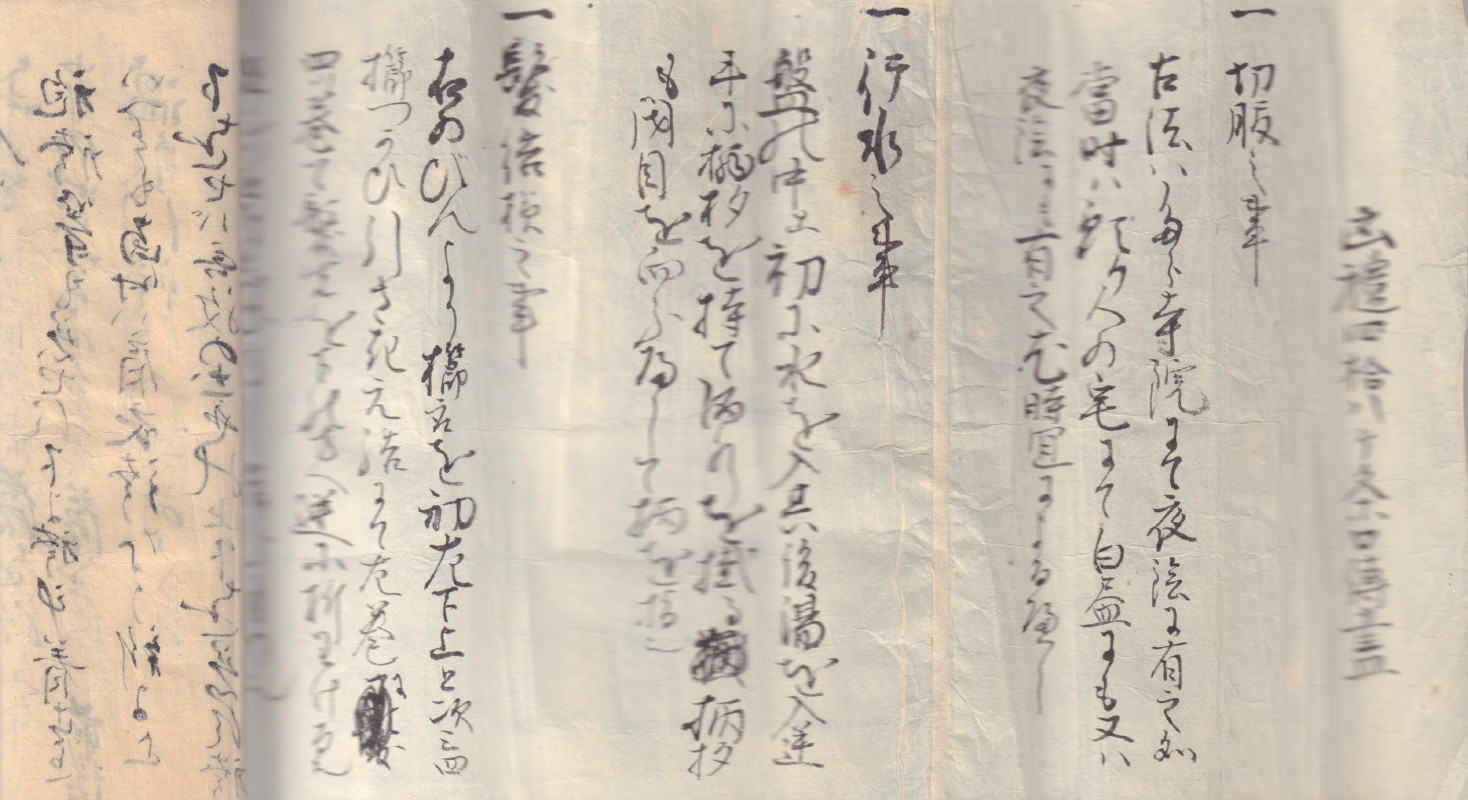JINEMON, Ito. (also known as Ito Yukiuji). Seppuku Yonjukkajo Kokoroe no Koto.
(Japan): no printing details, no date (c.1800). Original manuscript scroll on the traditional etiquette of the seppuku ceremony. Seppuku sometimes referred to as hara-kiri , “abdomen/belly cutting”, is a form of Japanese ritual suicide by disembowelment. It was originally reserved for samurai, but was also practiced by other Japanese people later on to restore honour for themselves or for their family. A samurai practice, seppuku was used either voluntarily by samurai to die with honour rather than fall into the hands of their enemies (and likely be tortured), as a form of capital punishment for samurai who had committed serious offenses, or performed because they had brought shame to themselves. The ceremonial disembowelment, which is usually part of a more elaborate ritual and performed in front of spectators, consists of plunging a short blade, traditionally a tantō, into the belly and drawing the blade from left to right, slicing the belly open. If the cut is performed deeply enough it can sever the descending aorta, causing a rapid death by blood loss. The first recorded act of seppuku was performed by Minamoto no Yorimasa during the Battle of Uji in the year 1180. The practice, however was not standardised until the 17th century after seppuku had ceased being mainly a battlefield or wartime practice and became a para-judicial institution. Ritualised seppuku was usually performed in front of spectators A samurai was bathed, dressed in white robes, and served his favourite foods for a last meal. With his selected kaishakunin (attendant) standing by, he would open his kimono , take up his tantō (knife) or wakizashi (short sword) and plunge it into his abdomen, making a left-to-right cut. The kaishakunin would then perform kaishaku, a cut in which the warrior was partially decapitated allowing his head to fall forward into his hands. The ceremony calls for 48 provisions titled Kyorei Yonjuhakkajo Kuden Tsuki (Forty-Eight Oral Traditions on unfortunate ceremonies) which are detailed here in this scroll which was presented to Ashikaga Yoshisada. The manuscript includes notes on cleansing, hairstyling, costume, sword use, etc. The scroll measuring approx. 16cm by 300cm is in very good condition complete with original cloth envelope signed by Ashikaga Yoshisada’s second son Fukano. An amazing manuscript, whilst texts on seppuku etiquette can occasionally be seen in books, stand-alone documents such as this are rarely found.
Original price was: $2,500.00.$1,750.00Current price is: $1,750.00.
1 in stock



